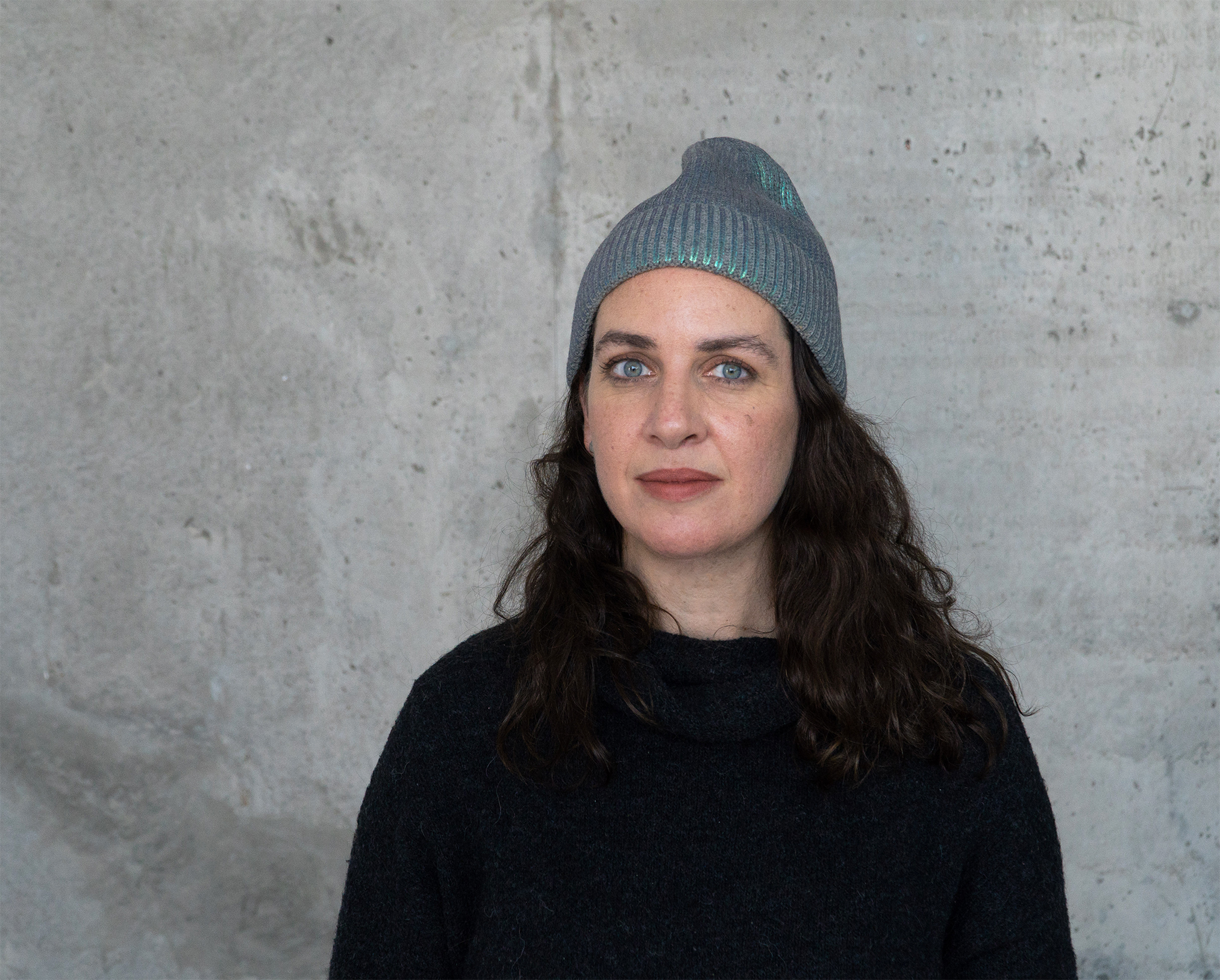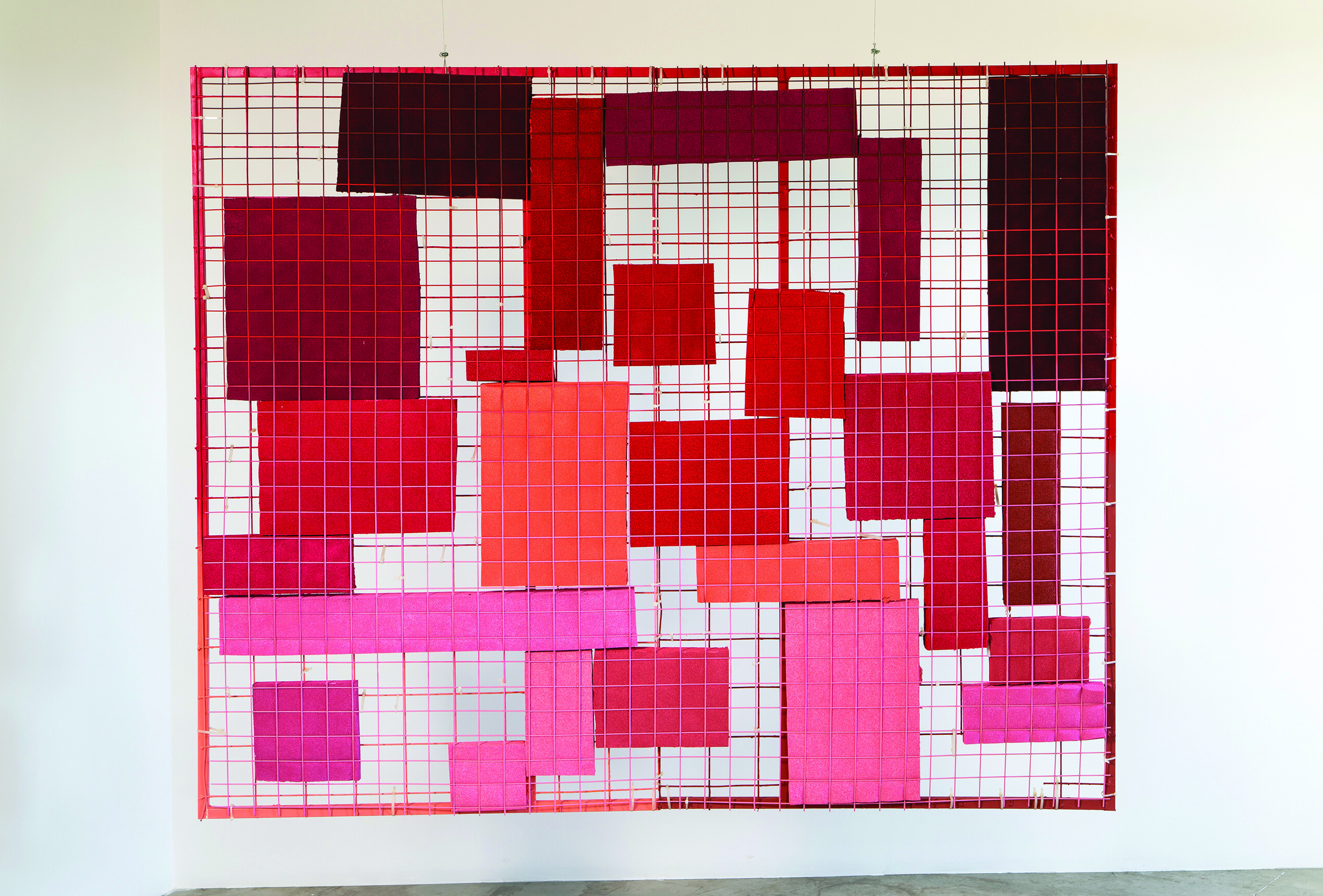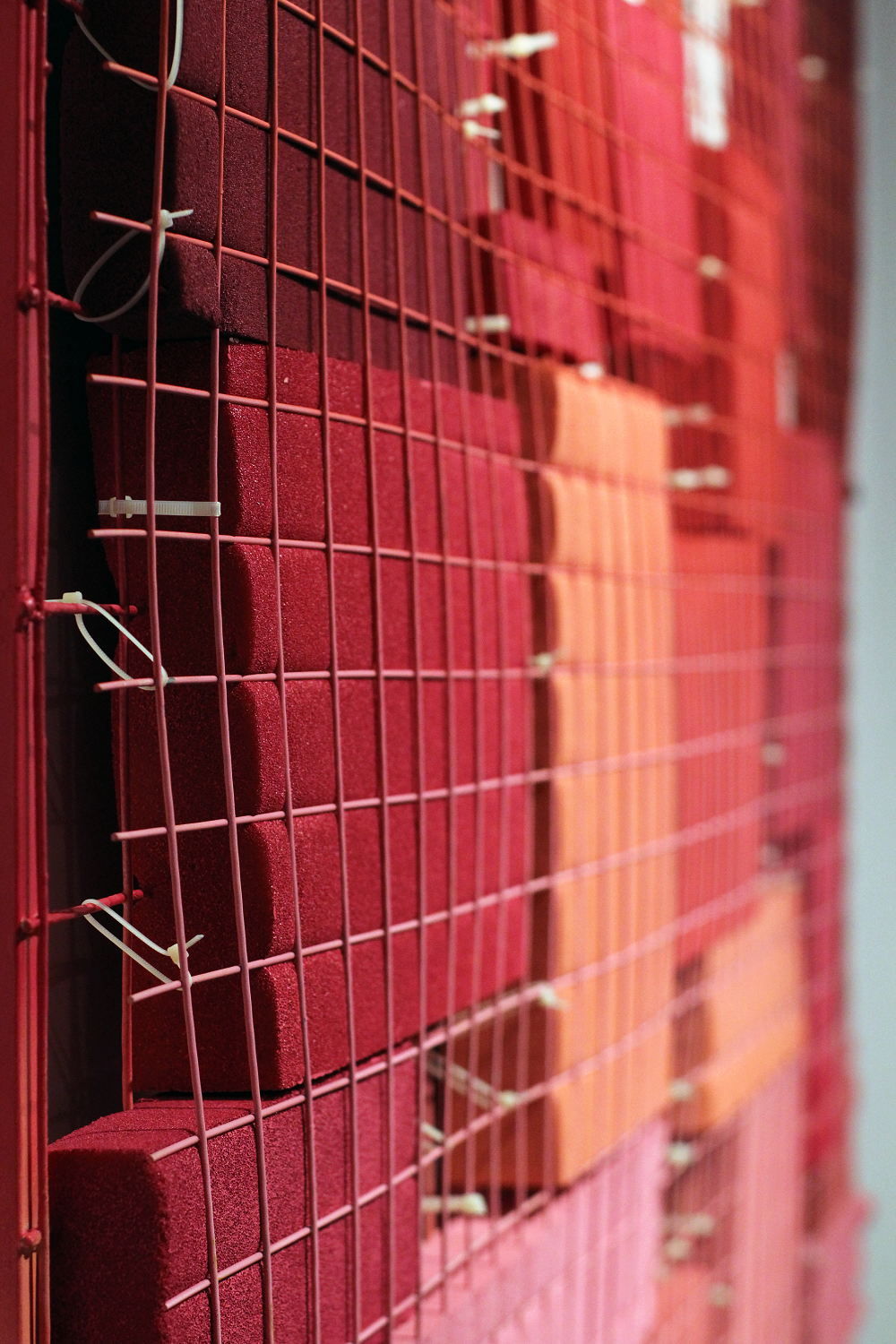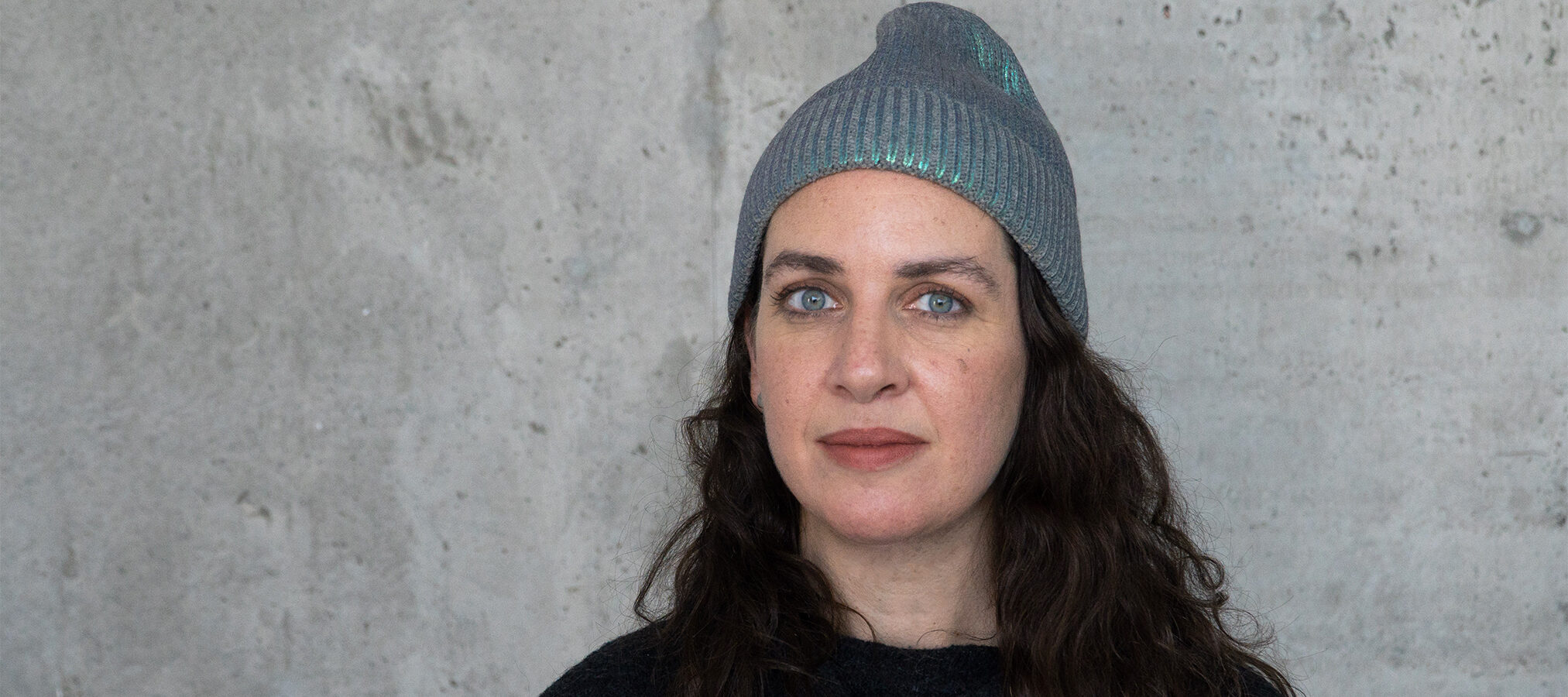The seventh installment of NMWA’s Women to Watch exhibition series, New Worlds, is presented by the museum with the integral partnership of our national and international outreach committees.
The exhibition showcases 28 contemporary artists who respond to our extraordinary times—the global pandemic, advocacy for social reform, and political division—by reimagining the past, presenting alternate realities, and inspiring audiences to create different futures. We spoke with some of the participating artists about their featured work and practice.
Artist: Irina Kirchuk
Nominating Committee: Argentina Committee

1. What themes does your work in New Worlds address?
This work is part of a series of barriers that ironically relate the idea of covering doors and windows in my city with the idea of abstract geometry. Their rectangular shapes of foam rubber form a chromatic composition similar to the game Tetris. They attempt to fit together, squeezed by two grids, quoting, in a very simple and visible way, the basic crushing and compression operation of sculpture.
2. Is this work representative of your oeuvre? How does it fit into your larger body of work?
This work is part of a series of more abstract works in my oeuvre. In general, I usually work with found objects whose function is still recognizable. However, in this work, I took parts of objects, fragments of grids that I found in the street and pieces of foam rubber from various sources. Within the larger scope of my work, this series is more delicate with a more two-dimensional nature; an exercise in geometry and color to create a more abstract image. It is a kind of geometrical composition, but with the informality of the shapes found. I move away from the idea of direct representation, but at the same time I use a very direct execution method, superimposing grids and foam rubber.

3. As an artist, what are your essential materials and/or tools for building a new world?
I mostly use materials found in cities, objects in disuse and discarded industrial materials, as a way of crafting a new world with existing material that this world has discarded. This allows me to transform these materials into works of art without regenerating new materials in this collapsed world.
4. Did any books, music, film, news, or other art inform your work in this exhibition?
Art history has a constant influence on my work. This specific work was influenced by the Concrete Art movement in Argentina, since it presents abstraction while using geometric shapes and analyzing plastic elements. However, in this case, using real materials from daily life creates a reversion to, or contemporary quote from, Concrete Art. This contrasts with the movement’s own manifesto, which proposes developing an objective system of composition, since in my work it would be a totally irregular system of composition.
I am also very interested in the work of the Swiss artist Roman Signer, who inspires me with his humor, and the work of the Argentinian poet Hugo Padeletti, who inspires me with his spatial scenes and his way of seeing the everyday domestic world.

5. How have the events of the past several years—the global pandemic, increased advocacy for social reform, and striking political division—changed or challenged your practice?
World events in recent years have had a direct impact on artists’ production, particularly because the idea of “globality” demanded by today’s contemporary art world is being reconsidered. This is mirrored in the selection of ideas and materials when creating new works. In Latin America, with the economic difficulties brought on by the pandemic and the rise of ultra right-wing governments, given the resulting impoverishment, as artists we are forced to reconsider our practices from minute to minute.
6. If you could travel to any time, past or future, where would you go? Why?
I would go back to a point in the past where we could have stalled our current serious situation presented by climate change, which is destroying our planet, and rethink new concepts for sustainability.
New Worlds: Women to Watch 2024 is on view at the National Museum of Women in the Arts from April 14 to August 11, 2024.
